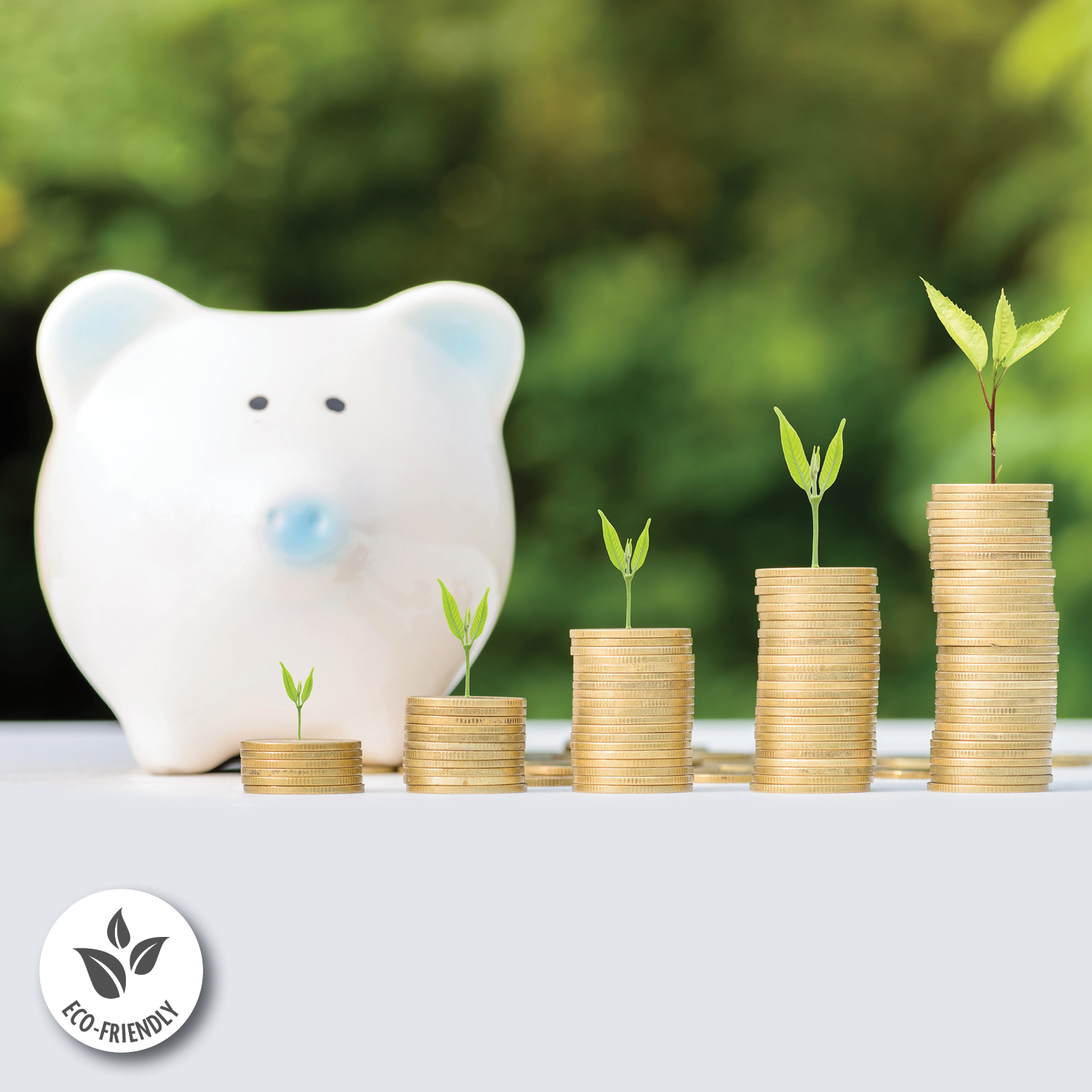5 Ways to Go Green on a Budget
Going green doesn’t have to mean spending a fortune on eco-friendly products or major home renovations. In fact, adopting green habits can help you save money now as well as in the long run. Here are five creative ways to go green and reduce your expenses at the same time.
1. Embrace energy efficiency
The first move toward a more sustainable lifestyle is to make your energy usage more efficient.
Start by switching to energy-efficient appliances to instantly reduce energy consumption and cut costs. While the initial purchase may require some investment, the long-term savings should offset the cost. Additionally, your purchase may be eligible for rebates on appliances with the Energy Star certification through the Inflation Reduction Act. Contact your state’s energy office to see if your purchase qualifies for a rebate.
Second, if you haven’t yet, switch to LED bulbs, which can use 75% less energy than incandescent bulbs. They also last up to 25 times longer for additional savings.
Finally, many newer appliances come with smart features and can be connected to any device with Wi-Fi access. This allows you to control your appliances from your phone for optimal efficiency.
Tip: Most modern thermostats are programmable. Use this feature to have your heat or A/C go off when no one is home or when most of the house is asleep for increased energy savings.
2. Make DIY cleaners
Commercial cleaning products can be expensive and often contain harsh chemicals that can harm the environment and your health. Instead, you can try your hand at making your own natural cleaning solutions using simple ingredients like vinegar, baking soda and lemon. These household staples are just as effective as store-bought cleaners and are significantly cheaper.
Here are some quick solutions to get started:
- All-purpose cleaner. Combine equal parts water and white vinegar with a few drops of essential oil for a preferred scent.
- Glass cleaner. Mix water with a splash of vinegar with a bit of rubbing alcohol for a streak-free shine.
- Sink and shower scrub. Create a paste with baking soda and a little water for scrubbing surfaces.
Tip: Reuse old spray bottles for your DIY cleaners for additional savings.
3. Start a small compost bin for food scraps
Diverting food waste from landfills reduces methane emissions, a potent greenhouse gas. If you have a small outdoor space or even a balcony, starting a compost bin can help you reduce food waste and create nutrient-rich soil. Composting turns kitchen scraps into natural fertilizer for plants and gardens, which is especially useful if you’re into gardening or want to start.
Tip: If you don’t have outdoor space, try vermicomposting (composting with worms) indoors; it’s clean, efficient and great for small apartments.
4. Use less plastic
Single-use plastics are among the most environmentally damaging products we use daily. Try to eliminate or at least significantly cut down on your use of disposable plastic by replacing the products you use with reusable items. For example, you can replace plastic water bottles with durable bottles, plastic straws with metal ones and silicon storage bags instead of plastic ones.
5. Shop locally and seasonally
Save on food costs and reduce your energy usage by shopping locally and buying produce that’s in season. Shipping costs can increase the cost of goods, so buying local, seasonal fruits and vegetables will do a favor for your wallet. You’ll also lower the carbon footprint of your food.








